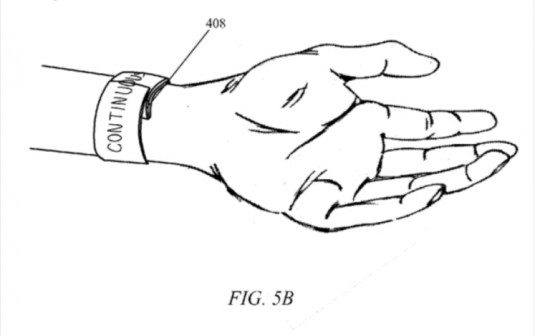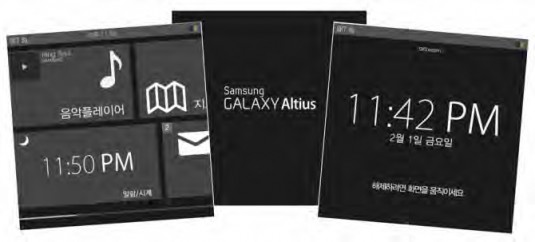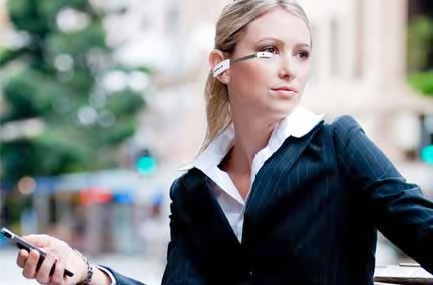Google and Vuzix have glasses, Apple and Samsung might have watches. Functional accessories will be the next hardware trend.
By Kathleen Maher
Google has demonstrated its Google Glass technology and is hard at work getting production-ready units built in time for a 2013/2014 release. The company’s New York office brought in journalists to let them try out the newest thing ever, and Google founder Sergey Brin was recently spotted on a New York subway trying out Google Glass. The main application for now seems to be recording real life—at least that’s what Google is promoting in its new video for Glass (embedded at end of article). The device is designed to work with a phone, and Google has revealed that it will work with an iPhone as well as Android phones.

Google has been slowly releasing information about Google Glass and going for targeted publicity shots. The device showed up at New York’s Fashion Week. People who have used the device say that it works well—most say this anyway. The design is basically a bar with ear pieces that goes across the forehead, and the screen is a small rectangle that sits up just inside one’s field of view. The idea is that users can focus on it when they want to and ignore it when they don’t. So far, the one thing we’re noticing the most is that people are shooting really terrible video because being situated just above one’s point of view is not really where you want to point your video. Still, Google figures we’ll get used to it—either used to lousy videos or used to pointing our head correctly when we’re shooting.
Meanwhile, the Apple stalkers have found patent filings and leaks around Apple’s possible plans to build wearable devices including a watch. There are enough rumors around to suggest there is a real product and that Apple has at least 100 engineers working on it—this comes to us from Bloomberg’s Sam Grobart, who has absolutely nothing else intelligent to say about the watch other than he thinks it will be a companion to the iPhone.
Apple applied for a patent in 2011 for a wearable device, and diligent web searchers have turned it up. The Apple Insider site makes a regular practice of checking Apple patents, and they were the first to locate a patent filed by Fletcher R. Rothkopf, who is, you won’t be surprised to hear, product manager at Apple. The possible Apple Watch is based on flexible display technology using a wrist band that can lie flat or curve to fit the wrist—a bi-stable spring as described in the patent. It’s better known as a slap wrap, at least by some people. The patent says the information displayed on the device will adapt to its shape. It has touch and sensors so the device knows when it’s oriented in a position to be looked at or a position where it is not being looked at and it can sleep.

In other leaks, the Apple Watch display is supposedly being developed by Corning’s Gorilla Glass, which has refined their technology to be able to make a flexible display. That makes as much sense as anything. Why not Corning Gorilla Glass, right?
While Apple has done its due diligence as far as filing a patent, etc., the company is not going to waltz into this market unchallenged. There are rumors Samsung is working on its own idea of a watch computer. It will be named the Samsung Galaxy Altius, and come to market like the wearable health devices that were a blip on the Christmas 2012 radar. Devices are coming on the market like the Nike FuelBand, which is kind of attractive in a geeky sort of way, and the Up by Jawbone, which monitors your activities and lets you know how much exercise you get and how much sleep.

Back to glass
What seems inevitable is there are going to be devices we can wear which will give us information around what we need to know right now—the time, where we are, directions, who is calling, or additional information about our surroundings. Vuzix, of Rochester, New York, is a company formed from VR pioneers Forte Technology, which built early head mount systems.
Vuzix is rapidly building products to meet a need the company believes will materialize in a short time. It’s racing to complete development on its Smart Glasses line, similar to the Google Glass idea. Vuzix took its M100 model to CES. It’s a monocular device that includes an integrated head tracker and GPS, and can access applications via Android. It’s clearly being pitched at the same market as Google Glass. The device won a CES Innovation Award at CES 2013. Shortly after the conference, the company announced that it had received patent grants including patents titled “Agile Optical Phased Array Device and Applications” and also “Near Eye Display with On-Axis Symmetry.”

There’s a lot of smoke in all this, and that’s because no one really knows how people will use these things. But there is a gut feeling among the providers and the consumers, if web chatter is any indication, that wearable computing makes sense. The smartphone has proved the point. We can do without the things, but it would be nice not to have to pull the thing out and check it all the time. It might be nice to have the thing whisper discreetly in your ear, “You wanted to go to the gym at 2 p.m. today, remember?” or help you recognize someone: “That’s your neighbor’s wife.” While it’s whispering, it could give you street directions in New York as you look for an address, or it would if New York had any kind of decent mobile phone coverage.
A watch makes a lot of sense. We can check for an important text, or the weather, or any number of quick things we now check our phone for dozens of times a day.

Right now, we seem to be evolving to the stage where there are several devices, and they can already tell you that you haven’t taken enough steps, or that you got your best workout ever, and, well, what time it is, but so far they’re not connected. As in so many cases these days, that’s the real revolution—the interconnectedness of our information and the devices we use to access it.





